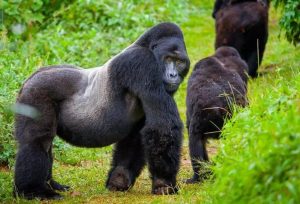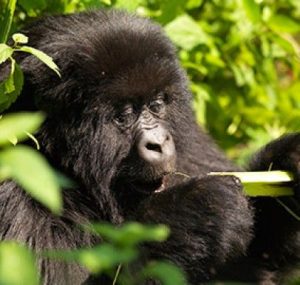Buffaloes in Uganda
Buffaloes in Uganda. Uganda, known as the “Pearl of Africa,” is home to a wide variety of wildlife, including the formidable African buffalo. These impressive creatures, often spotted in national parks and wildlife reserves, are a symbol of strength and resilience in the wild. Buffaloes, or Syncerus caffer, are among the “Big Five” game animals in Africa, and in Uganda, they hold a special place in the country’s rich biodiversity.
In this blog post, we’ll explore the characteristics of buffaloes in Uganda, where to find them, and why they play a vital role in the country’s ecosystems.
Characteristics of Buffaloes in Uganda
Buffaloes are large, robust animals with a distinctive appearance. They are covered in a dark brown or black coat and are known for their large, curved horns that can span up to five feet across. These animals can weigh anywhere between 500 to 900 kilograms, making them one of the heaviest land mammals in Africa.
Unlike many other herbivores, buffaloes are known for their aggressive nature and tendency to stand their ground when threatened. They are social animals, living in large herds that can number from a few dozen to several hundred individuals. These herds provide safety in numbers, as buffaloes use their strength and size to ward off predators like lions and hyenas.
Habitat and Distribution in Uganda
In Uganda, buffaloes are commonly found in the country’s national parks and wildlife reserves. They thrive in various habitats, from open savannahs to wetlands and forests. Some of the best places to spot buffaloes in Uganda include:
- Queen Elizabeth National Park: One of Uganda’s most famous parks, home to large buffalo herds. The park’s expansive savannahs provide the ideal environment for these animals to graze and move freely.
- Murchison Falls National Park: This park, located along the Nile River, is another excellent destination for buffalo sightings. Here, the animals can often be seen grazing by the riverbanks or moving through the park’s bushland.
- Kidepo Valley National Park: In the remote northern part of Uganda, Kidepo Valley is a hidden gem for wildlife enthusiasts. Its rugged terrain and less-traveled paths offer a more intimate experience with buffalo herds.
- Lake Mburo National Park: Though smaller in size, Lake Mburo is home to a significant number of buffaloes, often spotted near the park’s water bodies.
Importance of Buffaloes to Uganda’s Ecosystem
Buffaloes play an essential role in Uganda’s ecosystems. As herbivores, they help maintain the balance of vegetation by grazing on grasses and plants, which in turn keeps the savannahs and forests from becoming overgrown. This grazing activity supports a wide range of biodiversity, creating habitats for smaller animals and birds. Additionally, their movements help disperse seeds, promoting plant regeneration.
Their presence also supports the tourism industry, as visitors from around the world flock to Uganda’s national parks to observe these magnificent creatures in their natural habitat. The conservation of buffaloes is critical not only for maintaining ecological balance but also for boosting Uganda’s wildlife tourism sector, which is a significant contributor to the country’s economy.
Threats to Buffaloes in Uganda
Despite their resilience, buffaloes in Uganda face several threats. Habitat loss due to agricultural expansion, human-wildlife conflict, and poaching are ongoing concerns. As people encroach on wildlife areas, the competition for resources between humans and buffaloes increases, often leading to conflicts. Additionally, illegal hunting for bushmeat and horns has put pressure on buffalo populations.
However, Uganda has made significant strides in wildlife conservation. Efforts by the Uganda Wildlife Authority and other conservation organizations have helped protect buffalo populations by establishing wildlife corridors, anti-poaching patrols, and community awareness programs.
Conclusion
Buffaloes in Uganda are not just a symbol of the country’s wildlife heritage; they are integral to its ecosystems and a key attraction for tourists. From the sprawling plains of Queen Elizabeth National Park to the remote wilderness of Kidepo Valley, these majestic animals roam free, contributing to the natural beauty and ecological balance of Uganda’s landscapes.
As conservation efforts continue to safeguard these creatures, it is essential that we support sustainable tourism and wildlife protection measures to ensure that future generations can witness the awe-inspiring sight of buffalo herds in the wild. Uganda’s buffaloes are a reminder of the power and beauty of nature, and preserving their presence is crucial for maintaining the richness of the country’s biodiversity.




